By TREVOR HOGG
Images courtesy of Mac Guff.
By TREVOR HOGG
Images courtesy of Mac Guff.
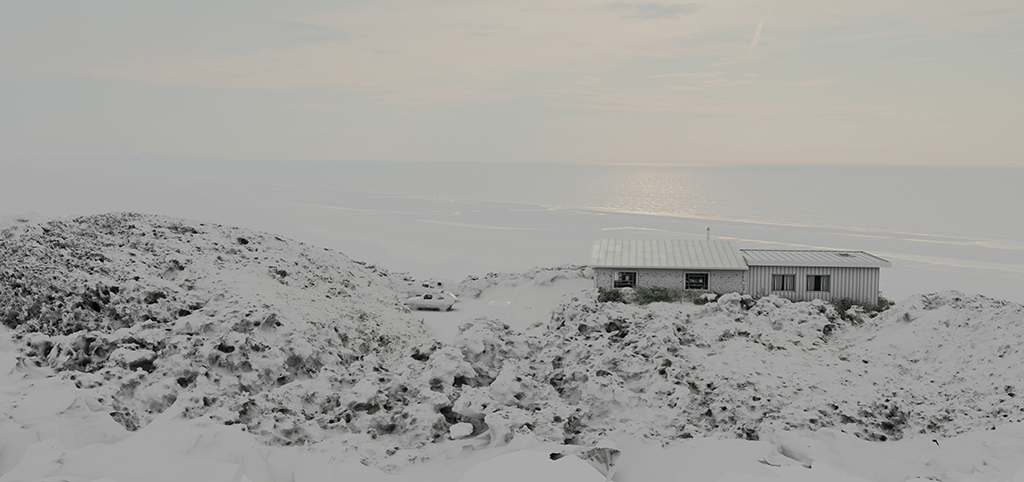


Downsizing presents some seriously big problems, especially when a shipbuilder suddenly finds himself less than a centimeter tall and having to deal with a predatory spider roaming his basement. The French adaptation of The Incredible Shrinking Man was directed by Jan Kounen and stars Jean Dujardin in the title role. As much as there was a desire to shoot practical effects, digitally tricky was unavoidable, so Paris-based Mac Guff’s four decades worth of experience was sought out with a team led by Benoit De Longlée responsible for 360 visual effects shots, 200 motion-controlled shots, CG creatures, a massive water droplet, and taking a 1.8 meters-tall Jean Dujardin and making him less than a centimeter in height. Mac Guff did not work alone as Les Androids Associés looked after previsualisation, Armada took care of set photogrammetry, and Spline was responsible for the motion control camera. “This project was one of the most challenging at Mac Guff last year because we had to shrink a tall man,” states Charles Seignolle, Head of Production at Mac Guff. “The idea was not to go full CG, like in a Marvel movie when Ant Man is shrinking. The director wanted to have oversized sets, but even those that were not oversized had to feel real. The technique used for that was motion control.”

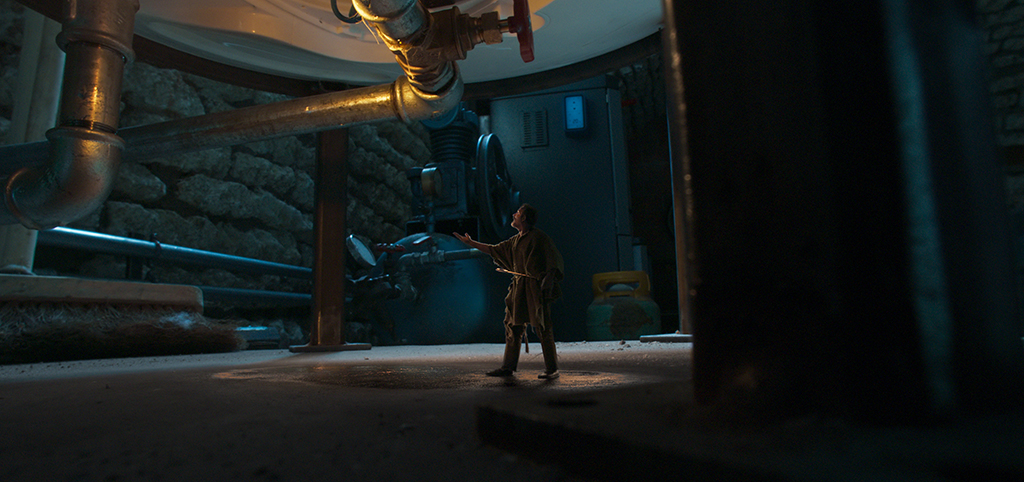
Maintaining the right scale was a complicated process. “When you change the scale, you have to change the scale of everything,” notes Thierry Onillon, Head of Visual Effects at Mac Guff. “This employs the camera and optics so they match the movement of whatever you do. When you have tiny lights in the real life and big lights when you’re shooting the actor, getting the correct corresponding distortion and specular response from objects, ground, materials and textures was a big deal.” The perspective of the camera remains the same throughout. “The director didn’t want to make macrophotography of a shrinking man,” Onillon states. “He wanted the audience to shrink with him.” Mac Guff supervised the overall shooting. “Benoit directed the motion control, previs and LIDAR scanning companies,” Onillon continues. “This ensured a consistency because we had the full control of everybody in the room, technically speaking. It is an important point because a visual effects vendor has the ability to understand where everything goes, and that’s why it was so important here. For the rest [of the pipeline], there has been a little difference in compositing in 2D for matching the cameras, which is a great deal again, but for everything that’s CG, like the creatures, it’s the normal pipeline.”
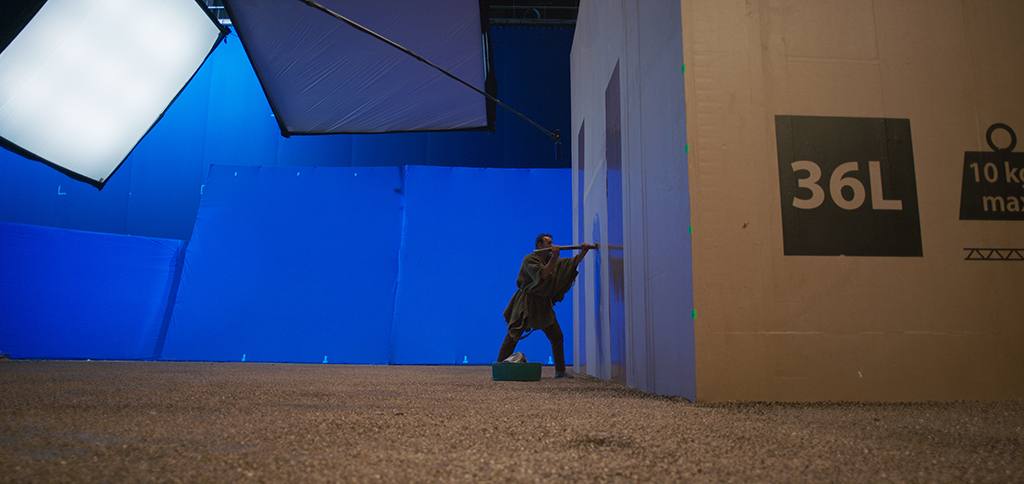

The desire was to allow Jan Kounen to shoot whatever he wanted with Jean Dujardin. “The main set had bluescreen everywhere, and we shot the actor on the ground or in front of some oversized props,” explains Benoit De Longlée, Visual Effects Supervisor at Mac Guff. “The primary action is in the basement, so that set exists somewhere else. It’s a fake set but at the human scale. We know that the action takes place in front of the stairs or anywhere in the room. We scan that set with the lighting made by the DP and everything chosen by the set designer so we have a digital version. Everything is exactly in the right place. Because of the system attached to the camera when shooting the actor, we know exactly where we are supposed to be in the basement so we can perfectly align the stairs to the oversized version of the stairs. The window is slightly higher, so I can put a mark on the bluescreen and tell the actor ‘It’s there.’ We record him in front of the bluescreen. Once we have that mock-up, we can take the motion of the camera and depending of the size of the actor, scale it down to 10 cm, 20 cm or 6 cm depending on the sequence. We put that motion inside of the motion control arm. Because we’re shooting really small, we have specific lenses, like a periscope or probe, which are extremely thin. We can place the camera in front of the stairs at the exact same position that we used with the virtual environment in the background, and then we shoot it again, but that time with the human-size set. We merge the two passes together, and that’s where classic visual effects are involved because we need to extend the ground, make sure that the texture, color and lighting look the same, and add a lot of other elements on top of that.”
“When you change the scale, you have to change the scale of everything. This employs the camera and optics so they match the movement of whatever you do. When you have tiny lights in the real life and big lights when you’re shooting the actor, getting the correct corresponding distortion and specular response from objects, ground, materials and textures was a big deal. … The director didn’t want to make macrophotography of a shrinking man. He wanted the audience to shrink with him.”
—Thierry Onillon, Head of Visual Effects, Mac Guff
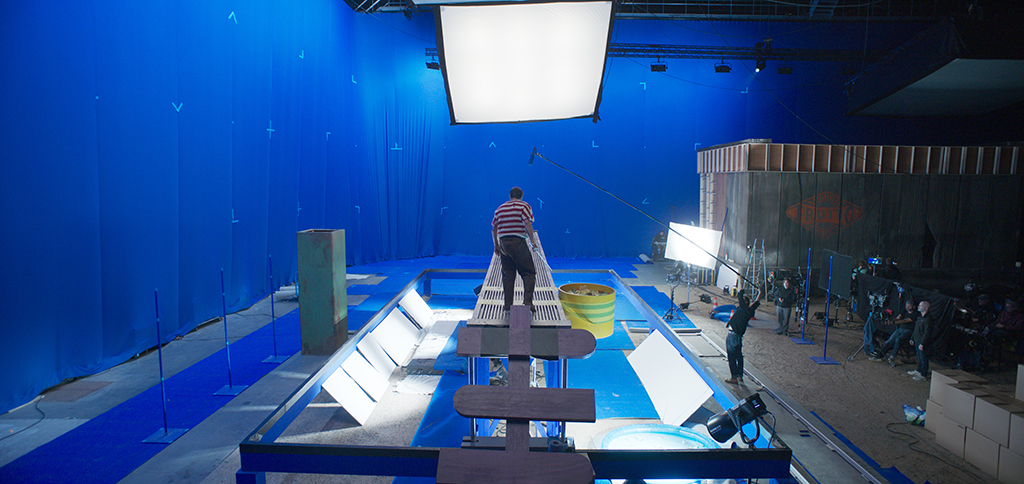

Setting up the motion control camera took a lot of time. “We basically have eight to nine pieces of wall that we can remove as well as seven pieces of the roof, depending on the motion that we need to do with the arm of the motion control camera,” De Longlée states. “If we shoot one shot at a time, we need to move the arm every time. We shot with the actor for a couple of weeks and ended up with 50 different shots with a different angle, and packaged all of the shots using the same angle of camera together. When we put the arm in the right place, we know that we can shoot different shots from different sequences using that same position in that same setup. Then we move the set, remove some wall, move the arm, remove some of roof, and shoot in the other angle using a different lighting setup. This allowed us to be more efficient.” Various constraints exist when shooting an actor. “You want to keep focus on emotion and the action, whatever is the camera angle. We let the director shoot as he wanted, and then group the shot by angle and by position of arm. We did a different schedule for the second team.”
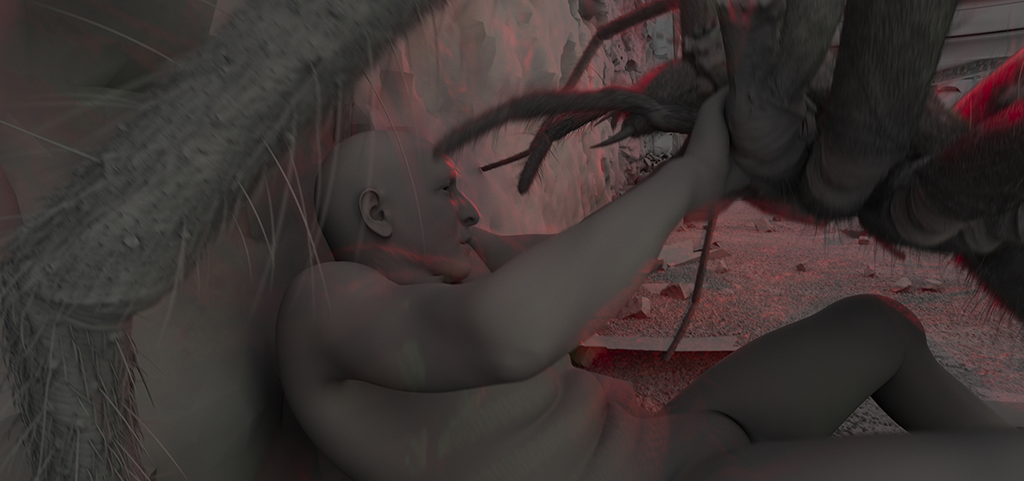
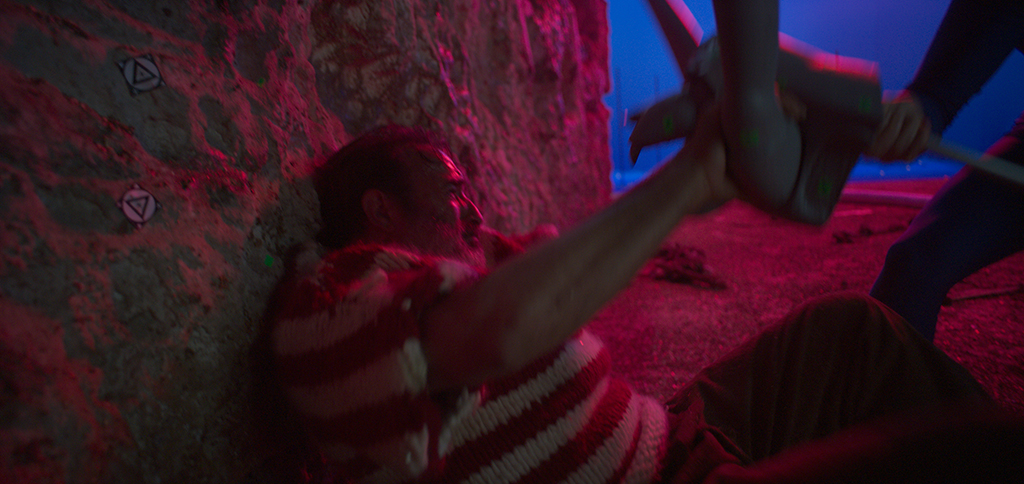
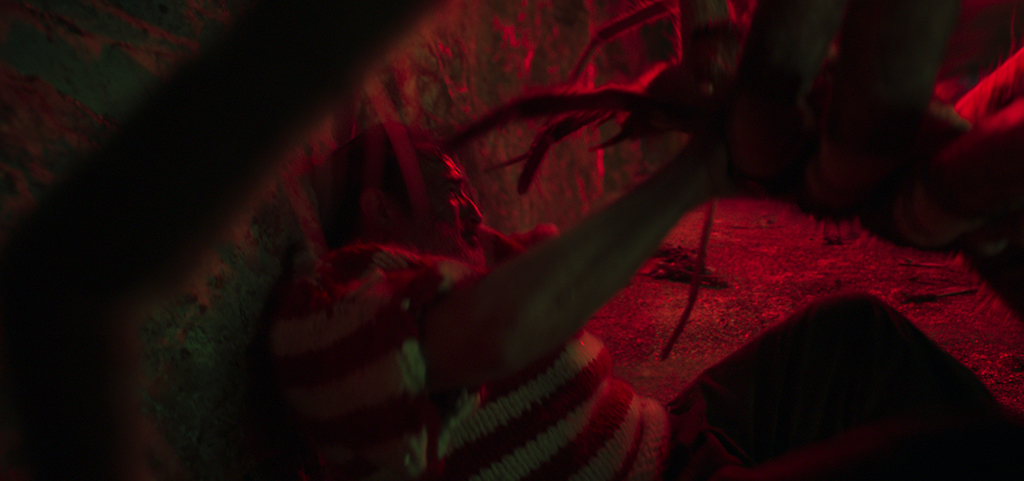
Aberrations from macro lenses were avoided. “The director wanted to make the basement look like New York with big streets and buildings, so it’s sharper than the look of the macro style,” De Longlée notes. “To get that level of detail when we are so small involves two techniques. First, we shoot with two different cameras, one for the actor and one for the set. The idea behind that is if we shoot with something that looks softer when you shoot the actor, and when we shoot the basement, we shoot with something sharper. When we match the two, the defocus looks the same as the one in the right scale. We try to extend the depth of field as much as we can when we shoot small, and when we are big, we shoot slightly softer. Basically, it looks like this is living in the same world and not going macro. This brings a lot of issues because we have to match all the lenses and cameras. The second technique is on our side when we shoot with the probe or periscope lens. If we get something that looks too soft, we do what is called in macrophotography, focus stacking. Because it’s a motion control, we can shoot again and again the same path. We can move the focus point a little bit ahead, shoot again, move it again and shoot it again. We end up with three, four or five different passes where the focus area is slightly more away. We merge all of those focused areas into one big picture so we end up with something that looks sharper than what the lens could have done in one shot.”


Atmospherics were a combination of practical and digital. “Sometimes, we put atmospheric effects directly in the motion control set to get the real thickness of the air,” De Longlée states. “On other occasions, we add flying dust in post-production to enhance the feeling of the small scale.” The spider appears both in the real and macro scales. “Before the we began shooting, the director approved the design of the spider,” De Longlée explains. “We 3D printed a plastic version of the spider in different pieces so when we attack the actor, he can punch the spider and grab its legs. It’s at the right scale in front of him and he can play with it. Six months later, when creating the spider in CG, we know that it matches perfectly with the one that was used on set with the actor. That allowed us to keep his arm and punch, basically the whole performance.” The prop team added a pouch of liquid so when Jean Dujardin is destroying the head of the spider, the blood of the spider went on his face. “We wanted to make it look like a real spider, but, at the same time, real spiders can go extremely fast,” De Longlée remarks. “It’s more like a call from the director saying, ‘Slow it down. Make it more like something dangerous.’ It’s an artistic decision that drove how we animated the spider.”
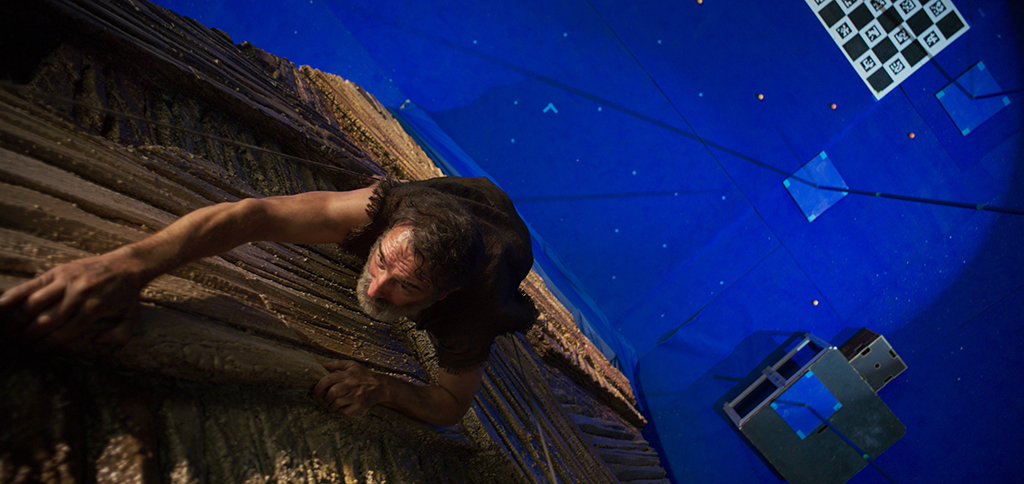
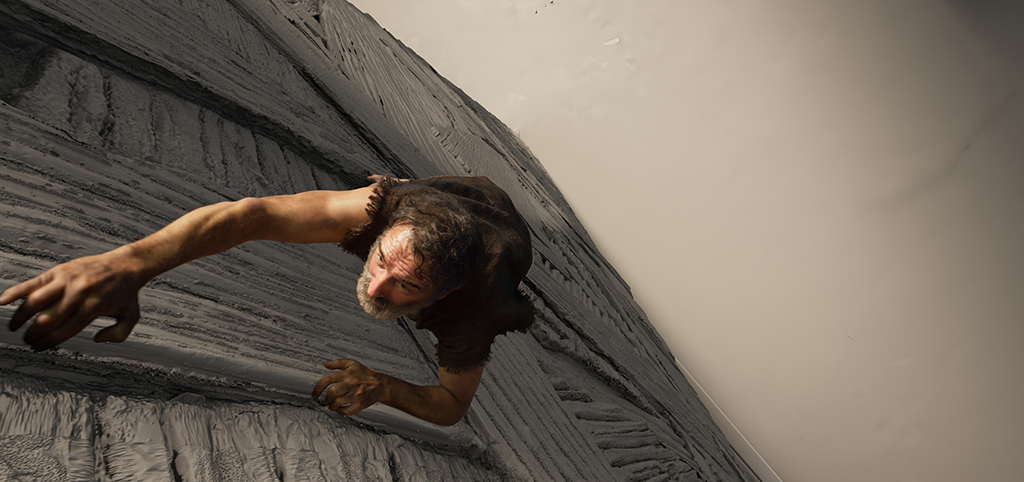

“We 3D printed a plastic version of the spider in different pieces so when we attack the actor, he can punch the spider and grab its legs. It’s at the right scale in front of him and he can play with it. Six months later, when creating the spider in CG, we know that it matches perfectly with the one that was used on set with the actor. That allowed us to keep his arm and punch, basically the whole performance.”
—Benoit De Longlée, Visual Effects Supervisor, Mac Guff


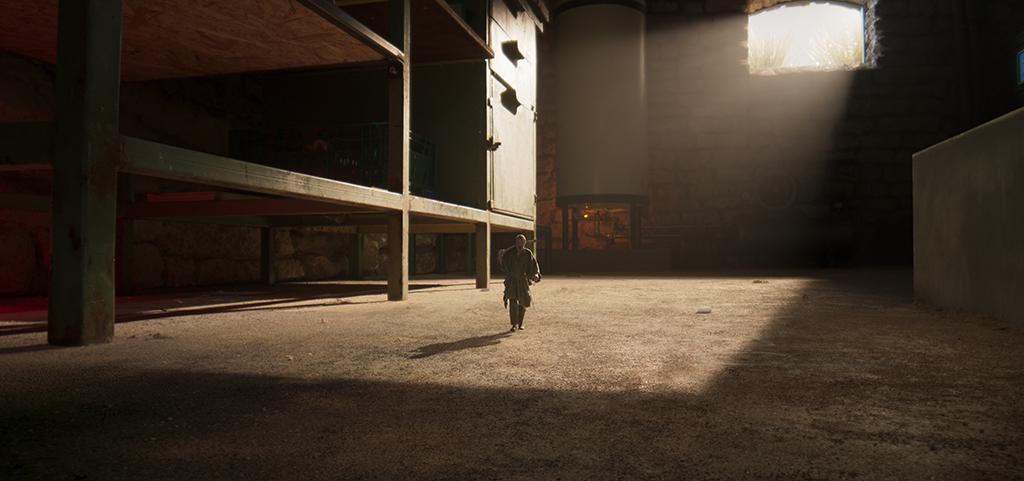
Discussions at the beginning of the production explored how physics works at the macro level, like when a match gets ignited. “That was actually tricky!” De Longlée laughs. “We had an oversized match with a LED head that could be turned on and off on set to fake the lighting contribution of the fire. The actor plays with that, then in CG we track the match and put digital fire. The hard part is, at that size, the shape of the flame is extremely simple, and we had to find something more interesting and complex. It’s a sweet spot between reality and what you want to see as a viewer.” A massive water droplet falls on the protagonist. “During the shoot, we added glycerin to thicken the water, so when the actor played with the water it was like a gel,” De Longlée describes. “If you have a drop of water hitting his face, it’s not doing a lot of small droplets, but like a big splash. We tried to fake it on set and then improve it in post-production with CG droplets. Because we have the scan of the water tank, it could be projected into the frame that we shoot with the motion control camera over the CG environment. The CG environment gets the same lighting, so when we add the CG droplet inside of the shot, the reflection and refraction is using the CG environment with the correct color, lighting and shadows from the set. You believe that it is reflecting the real things in the real space.”



A 360-degree asset of the basement set was created virtually. “The basement was a small room,” De Longlée states. “As soon as you have three people in there, you didn’t have space for the desired camera moves. We took 3,000 high-resolution photos, so every single 10 cm was shot with two or three different cameras under various conditions and from several angles. That was stitched together, and we used LiDAR to record the position in space of every single item. We ended up with an extremely heavy scan of the basement with the real textures and dust. When we did that, I had the DP [Christophe Nuyens] do afternoon and night lighting for specific sequences. We shot the photos in different lighting conditions made by the DP so what we have in the scan is exactly what the DP wanted using the real set. It’s not built by CG artists guessing on how it should look like. It’s coming from the set.”
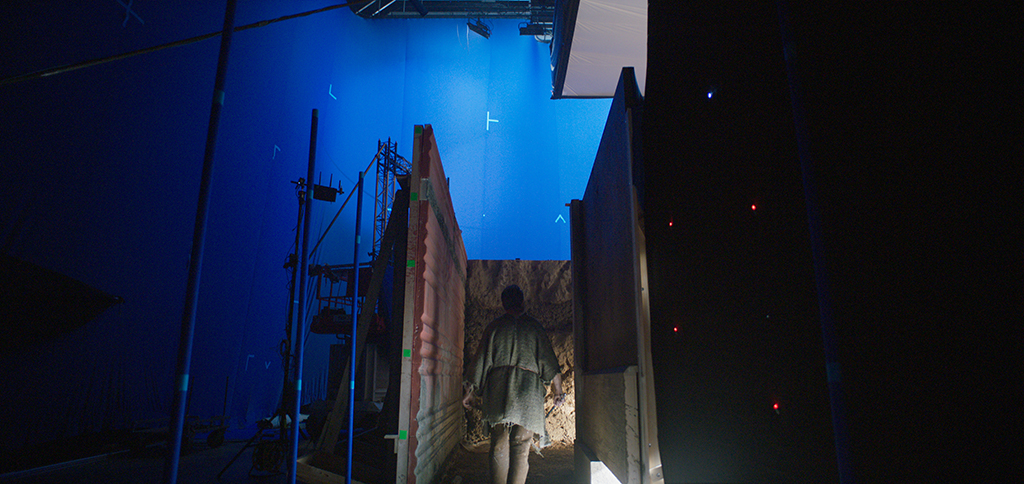


Grids had to be created for each camera, lens and position. “We shot them at an extremely accurate distance, and it assisted us in analyzing the distortion for this camera with that lens at this setup. Then we find another point. We tested all of the lenses to make sure that we could find the optical center for each lens and camera. We ended up with approximately 40 different matches. Basically, when we shoot with the main actor, the DP says, ‘I want to shoot with a 35mm.’ We know that if you want to shoot the shot with the 35mm of the main actor, we can shoot with a 24mm of the basement or [use] another 24mm that has a different specification or another lens. For all of those lenses, we mapped the way they shoot the reality. The dark grey portion is the camera from the main set, and the red portion is the overlay of the camera that is going to shoot once we neutralize the distortion of every lens. The tricky part is almost every shot we have a different couple of lenses to match, and we need to make sure that the perspectives and distortion are perfectly aligned. Doing the bokeh helped us to match the chromatic aberrations.”

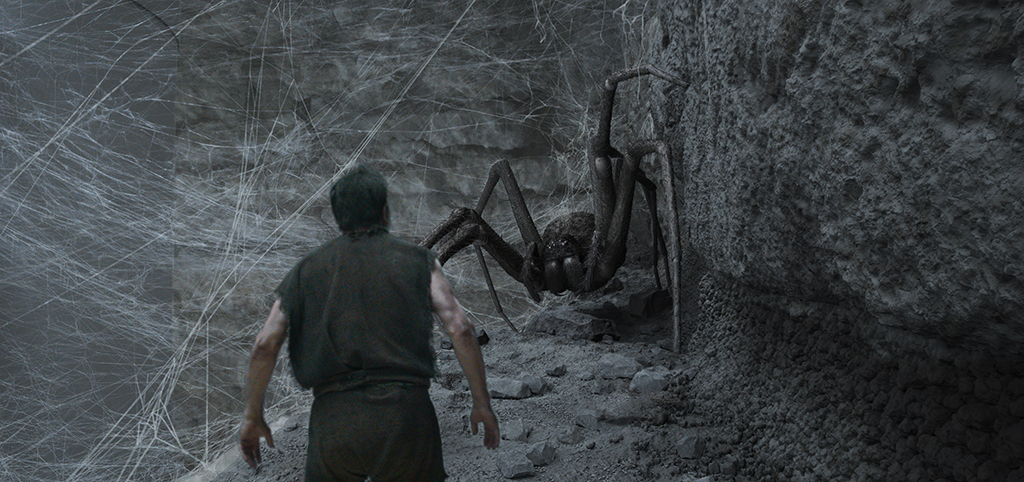

Motion capture helped with the animation of the digital double, which tended to appear in wide shots. “We went into the studio with the actor, and I had list of shots, sequences and actions,” De Longlée remarks. “I asked him, ‘Can you play when you’re eating or climbing in that sequence?’ We recorded the motion, which was then applied to his digital double, and put it in the shot.” Every shot had its own complications. “The Steadicam operator has the feeling that he can move wherever he wants because the studio is huge and empty,” Longlée notes. “But I know that in a couple of days, I will have a huge arm that is really heavy, which is going to move in the basement set, do almost a 360 and is going to collide with almost everything in the set. I need to make sure that when we shoot with the Steadicam, I can control in real-time the motion that the arm is going to make to ensure that the camera is not colliding with anything. It was almost like a stop-motion animation movie where you play with a puppet, shoot a frame, move the puppet and shoot another frame.”

